Alright so we’re trying something different this Friday on Couchfish. I’ve got in touch with with Nicky Sullivan, who wrote for quite a few years for Travelfish. She’s now in northern France at the moment and she’s going to be talking about a heart warming moment.
One way to make a difference. Photo: Nicky Sullivan.
I don’t know about you, but just about everybody I know who does a lot of travel is sort of going out of their mind with Covid, vaccines and quarantine and all of this other stuff. Everyone’s missing travel and wants to travel, and I thought, well, let’s talk to some people who have some really heartwarming moments to talk about.
So I’m gonna put it over to Nicky and let’s hear what was a heartwarming moment for her.
Nicky:
So when you contacted me about that, I didn’t have to spend long thinking about it because one of the most important days that I’ve ever spent in my entire life was when Typhoon Ketsana came across Asia in 2011 [note: the typhoon was actually in 2009] and really terrorised the Philippines, then crossed over and hit Vietnam. In Cambodia we got the tail end of it.
Helping out with a smile. Photo: Nicky Sullivan.
So I woke one morning to find the house had become an island, and the whole of Siem Reap was completely flooded, and the water stayed with us for about a week or two weeks, and the whole country had been battered. Tens of thousands of people, hundreds of thousands of people, were displaced. There were images of houses underwater up to their roofs. I mean it was a disaster, an absolute disaster.
There’s a woman in Siem Reap, Tania Palmer, an Australian woman, who arrived, gosh I’m not even completely sure of when she arrived, but she had come on a holiday, had seen what she saw in Siem Reap, and there were a lot of street kids at the time. She went back to Australia, then came back and set up the Green Gecko Project. She took in just under 100 children in the end, who maintained their connections with their families, but they spent their weeks with Tania at the project and Tania’s husband Rem, with a really solid program of education and health care. It’s a wonderful project.
Before and after Green Gecko. Photo: Nicky Sullivan.
Tania and Rem had gone to Phnom Penh in the midst of all of the flooding across the country, and coming back had crossed through Kompong Thom and there were families at the side of the road everywhere.
They told the kids about it when they got back, and the kids were really shocked and concerned, and they really wanted to do something. I remember Rem telling me that he’d been giving a civics class, I think it was, and the kids were “we can donate our our rice rations for them, we can do this, that and the other”, and he was very, very touched.
Rem, co-founder of Green Gecko Project. Photo: Nicky Sullivan.
So he and Tania got together with a couple of the hotel and DMC managers in town and they asked the kids to make a proposal to them, and to see if they would help them raise funds to support the relief distribution for companies in Siem Reap.
The kids made their presentation to the managers who received it, went back through their own networks and started fund raising, and then it went back to the kids who took responsibility for sourcing the rice, the fish sauce, the bottles of water. They did it all.
Tag it and bag it. Photo: Nicky Sullivan.
I was lucky enough to spend a day with them, on one of the days that they distributed it to families in Siem Reap and to the south of Siem Reap. It was astonishing really, really, really astonishing to see these kids working so hard and these are kids who in principle have nothing, they come from the poorest families in town. But they worked so, so hard and they put their hearts and souls into it, and we distributed a lot, a lot of food that day and helped a lot of families.
It was astonishing to see how somebody, who you might think has nothing, who you might think comes from a position of disadvantage, can do so much when they put their minds to it, it was beautiful.
Khmer families wait at a food distribution point. Photo: Nicky Sullivan.
Stuart:
So what sort of age would you say most of the kids were who were working on the project?
Nicky:
At that time they were in their mid teens, so they they’ve been with Green Gecko for about I think, about ten years a lot of them, but their ages varied, but on average around about mid teens.
Stuart:
Were they from the area around Siem Reap?
Nicky:
Yes, they were, I think they were mostly families that had been living along the riverside in Siem Reap, and a lot of those were cleared out. I’m not 100% sure how Tania connected with these particular families and these particular kids, but she set up a project that supported the families as well, so the kids would stay at Green Gecko to go to school.
An inundated house. Photo: Nicky Sullivan.
To help the families make up the shortfall (because the kids were out working the streets) she distributed rice for the families, and gave them the support that they needed to make up for the loss of the child working on the street. So it was a very holistic program.
Stuart:
On the the day when everything was being distributed, how did that play out?
Nicky:
We all gathered at Green Gecko in the morning. There was rice and great big sacks everywhere, there were bottles of fish sauce and soy sauce and tins of tinned fish everywhere, so everything had to be arranged into sacks so they could be given individually to the families.
An entire family were living here. Photo: Nicky Sullivan.
So we spent the morning doing all of that together, all of the kids. The guys from the hotels were there, there was Magnus Olafson from the Heritage Suites Hotel, Christian de Boer, who was at the Hotel de la Paix at the time, there was Dave King who was the manager of one of the DMC’s in town, and Tommy Bekaert from what is now Rambutan. Everybody got down and started sharing out all the rice, portioning it out, they brought all the water, and then we set to it.
Then it started raining again. We had three distribution points, and it was very well run with the authorities as well. At the pagoda that we went to, they had all of the families assembled and waiting for the food to be given out. Everybody waiting patiently in the sunshine, it was really special.
Working together to help those most in need. Photo: Nicky Sullivan.
At the next distribution, that was when the rain started again, and these families were in big trouble, but it was a wonderful moment to see how coming together like that, no matter where you’re coming from, can have huge effects.
Stuart:
So you were living in Cambodia for quite a few years and when I asked you about this, about a heartwarming moment, I mean, anybody who’s lived in Cambodia has had many moments like that, but when you answered me, you said that you didn’t even need to think about it, like this was straight off the tip of your tongue kind. Why?
Nicky:
For me it was just a very powerful day of people working together, staying cheerful, even when it was grim and raining, and they got uncomfortable later in the day. Just seeing people working together, from everywhere, from positions of privilege, from positions of disadvantage, and everybody just coming around a single goal, which was to help the families.
Rise up and get things done. Photo: Nicky Sullivan.
When we got down to the port, it was awful how their houses were completely surrounded by water. A lot of them were completely inundated. There was one family, their home was basically an old bed stand, and not much bigger than that, not much bigger than a double bed, under a plastic sheet, and that was how they were having to cope with surviving as a family, children, parents. The parents were very sick.
Stuart:
Was this down at Chong Khneas?
Nicky:
That’s it, yeah. The kids they worked so hard that day. It was so inspiring for me, as somebody who’s been fortunate enough to have grown up and been educated in the West, and sometimes you have moments thinking, oh gosh, I can’t do this, I can’t do that and moments of difficulty, and you think, you know what? If these kids can pull that off, then there’s not much to be afraid of.
For more information on the Green Gecko Project and the work they are doing, please see their website here.

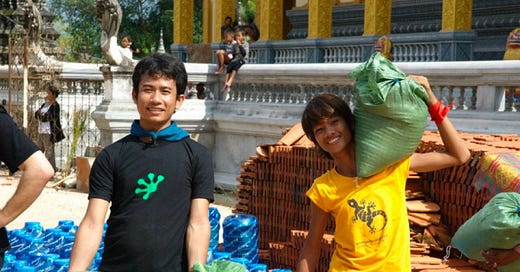


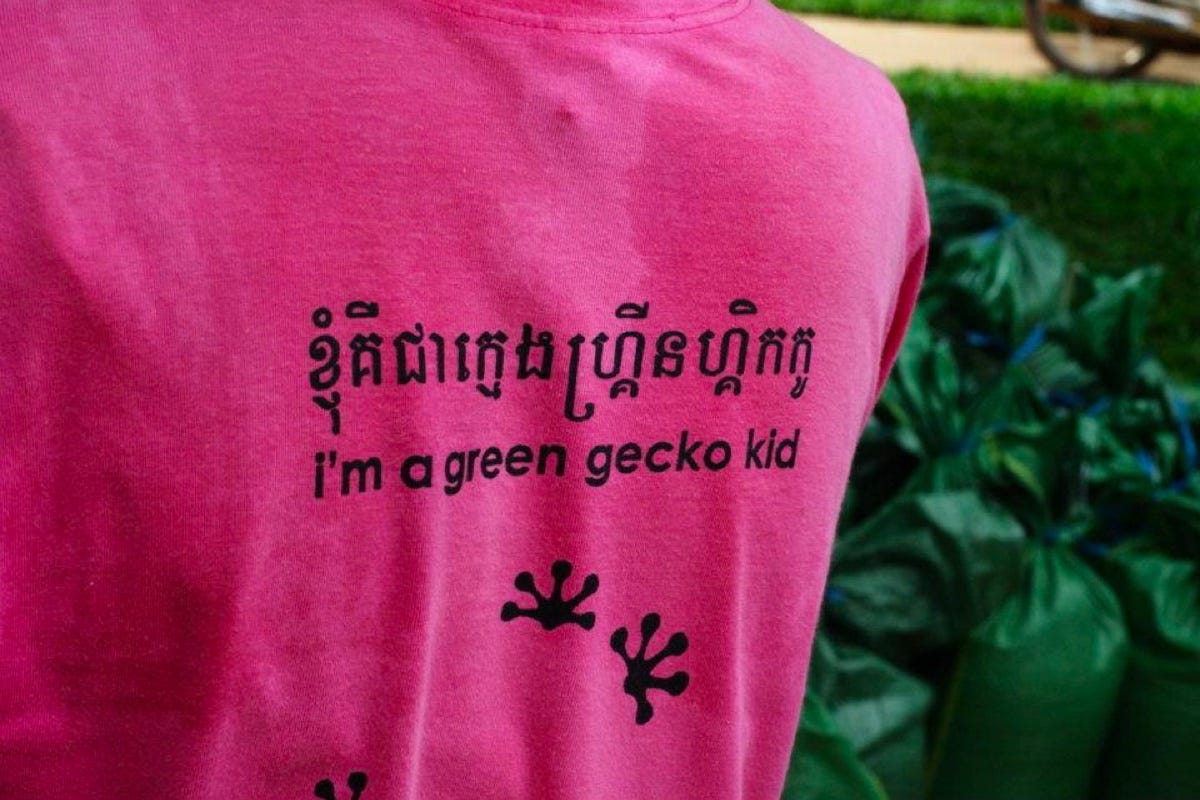


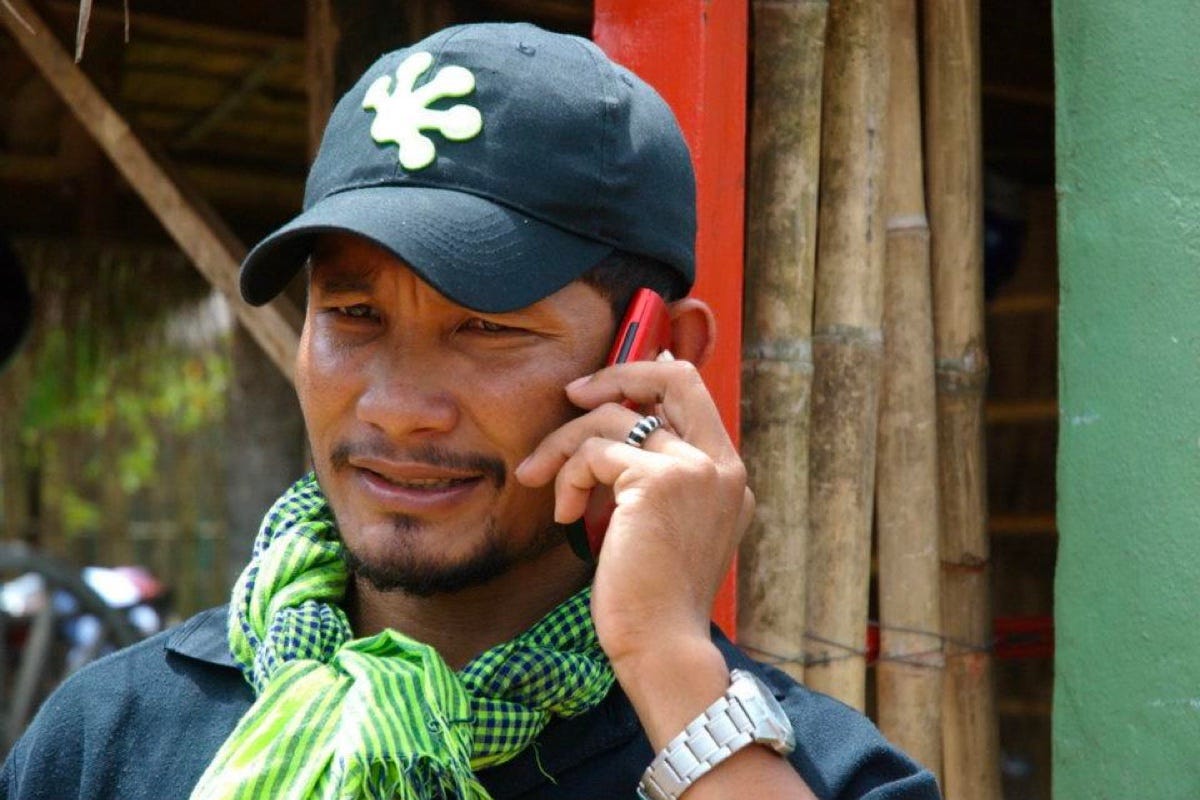
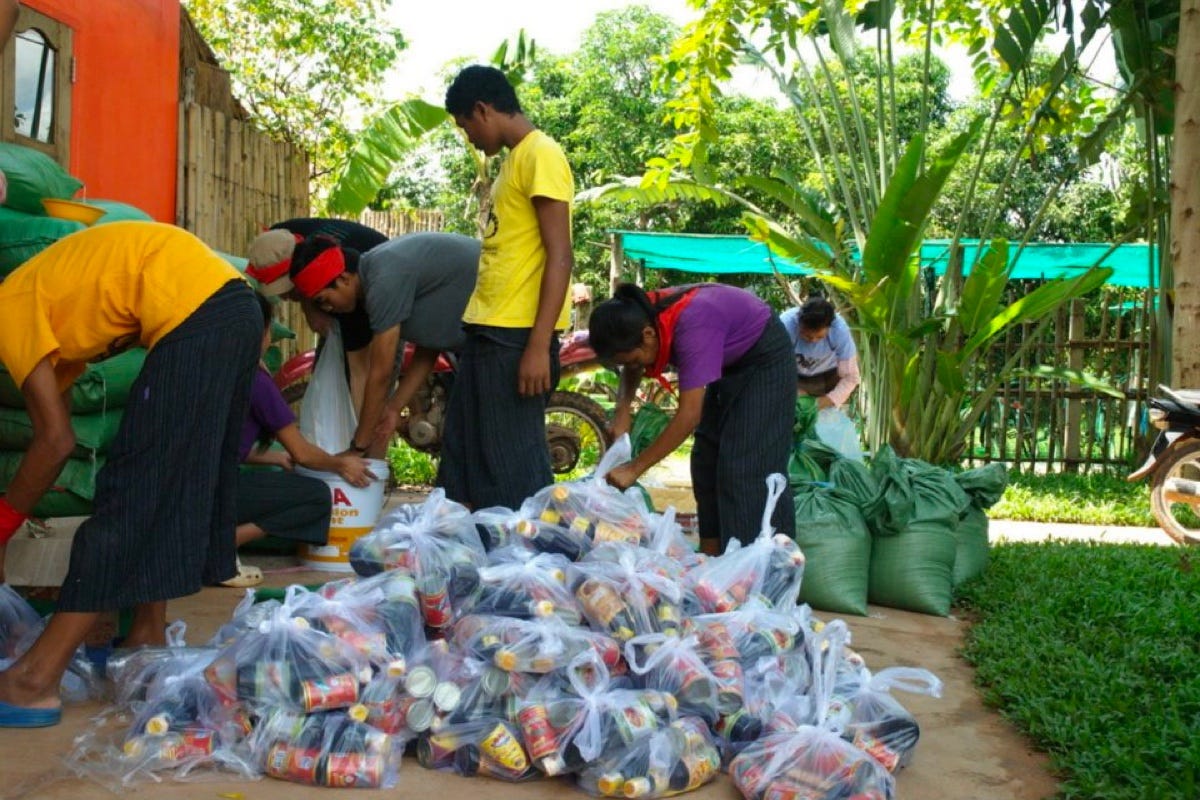

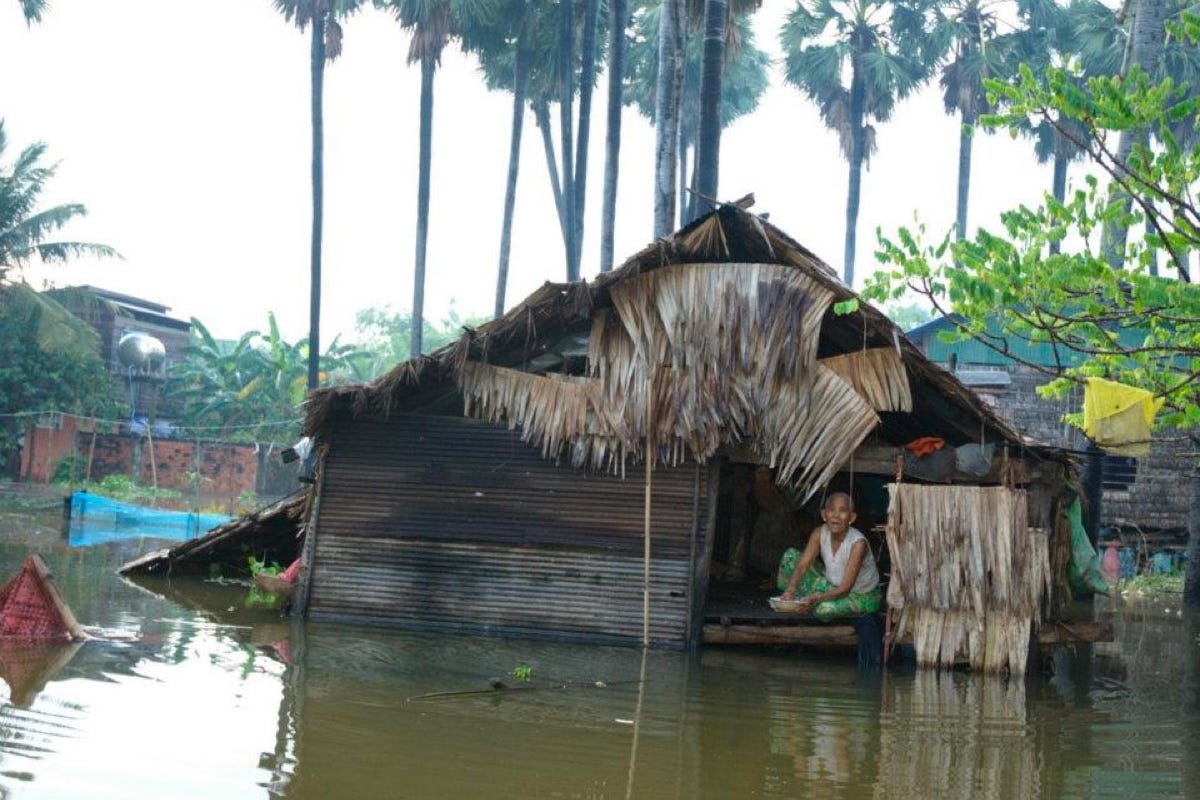

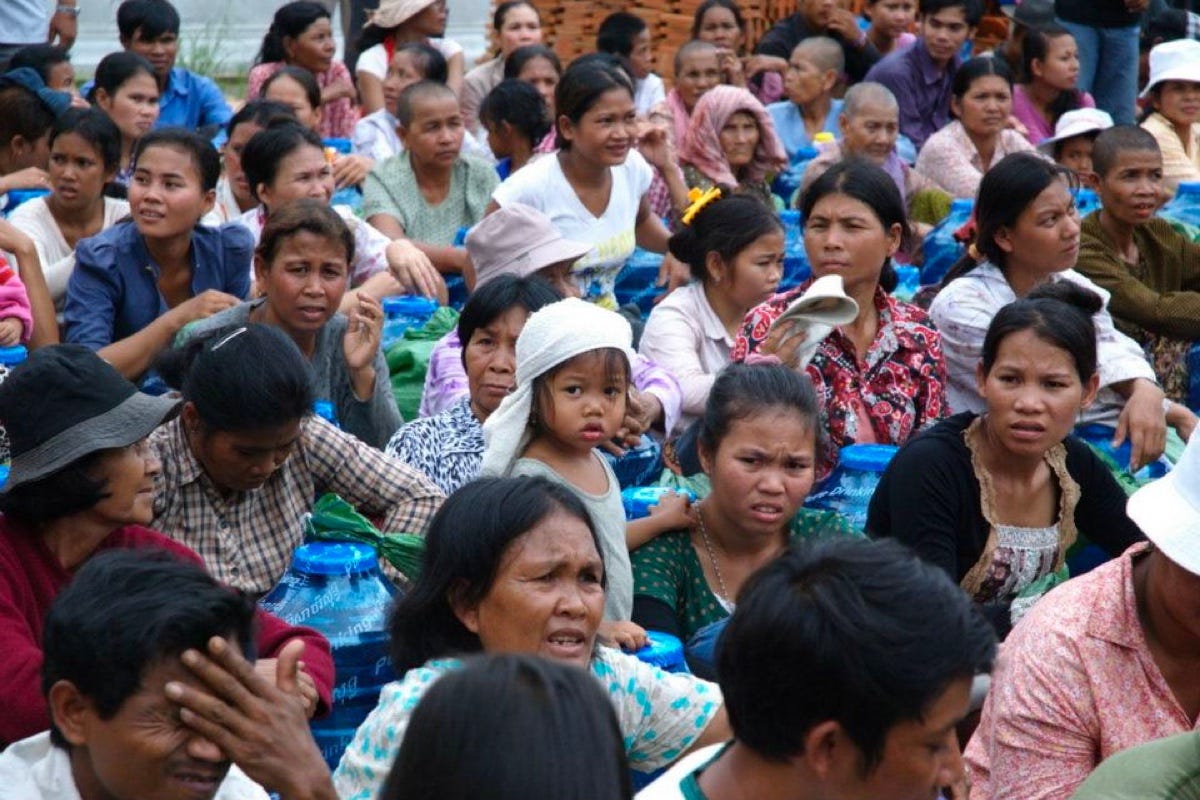










Share this post